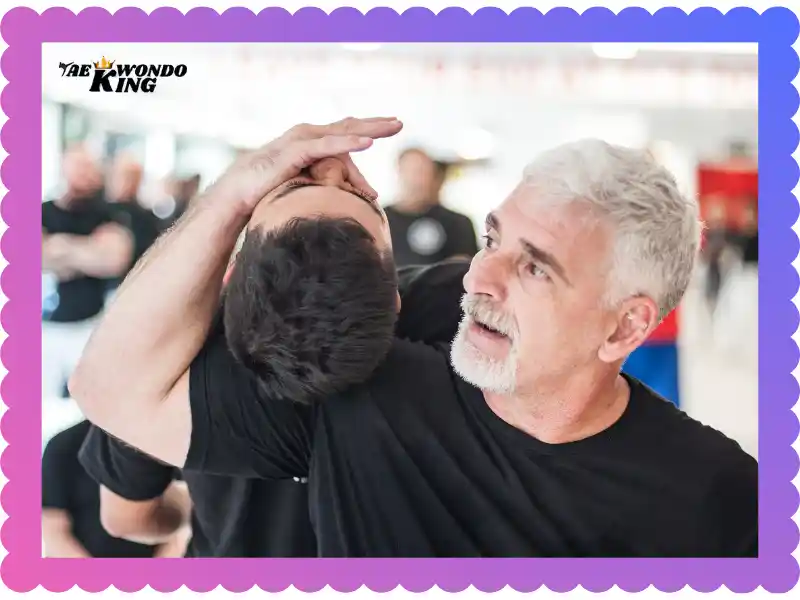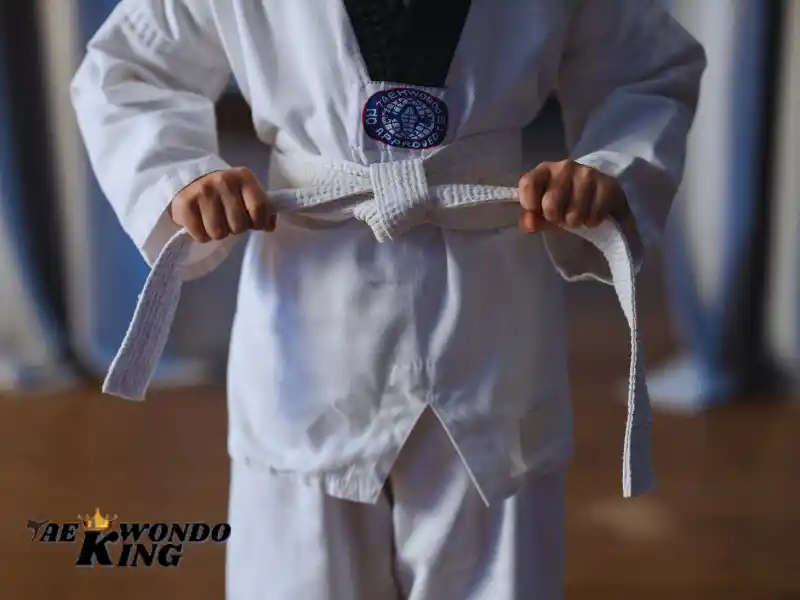
The world of martial arts is a fascinating one, filled with traditions, philosophies, and techniques honed for centuries. But let’s face it, some are just darn dangerous. These are the styles where one well-placed strike or maneuver can end a fight quickly and decisively. Here’s a look at the top 15 most dangerous martial arts in the world for 2024, ranked not just for lethality, but also for real-world effectiveness:
Top 10 Most Dangerous Martial Arts:
Krav Maga (Israel):
Developed for the Israeli military and known as the “art of self-defense,” Krav Maga is brutal and efficient. It prioritizes neutralizing threats as quickly as possible using strikes, grappling, and anything at your disposal. Think of real-world scenarios, not flashy kicks.
Muay Thai (Thailand):
Also known as “the art of eight limbs,” Muay Thai incorporates devastating strikes from elbows, knees, shins, and fists. The clinch fighting techniques and focus on powerful blows make it a terrifying art in the wrong hands.
Savate (France):
Savate, or “French Boxing,” is a surprisingly effective blend of Western boxing and kicks reminiscent of Capoeira. The footwork, agility, and emphasis on precision strikes make it a well-rounded and dangerous fighting style.
Eskrima (Philippines):
Eskrima, also known as Arnis or Kali, focuses on weapon-based combat and disarming techniques. But don’t underestimate the empty-hand skills. These flow like water, making them incredibly dangerous for close-quarter altercations.
Systema (Russia):
Developed by the Russian military, Systema is all about using natural reflexes and instinct in unarmed combat and weapon defenses. It prepares you for unpredictable situations and multiple attackers, making it a real nightmare for an aggressor.
Kyokushin Karate (Japan):
Known for its intense conditioning and full-contact sparring, Kyokushin is a brutal and effective karate style. Don’t let the white gi fool you; this style emphasizes powerful strikes and knockouts, making it a force to be reckoned with.
Kurtka Wrestling (Central Asia):
kurtka wrestling, also known as Turkmen wrestling or Goresh, is a grappling-based martial art where throws, takedowns, and ground control are king. The relentless pressure and pinhold can quickly subdue an opponent.
Sanshou (China):
Sanshou, also known as Sanda, is a modern Chinese combat system that blends striking, kicking, throws, and takedowns. Its dynamic nature and focus on power make it a spectacular and very dangerous fighting style.
Boxing (Global):
Don’t let the controlled environment fool you. Mastering the sweet science of boxing takes years, and a well-placed punch from a trained boxer can have devastating consequences. Footwork, agility, and precision make it a dangerous art.
Pencak Silat (Southeast Asia):
A collective term for indigenous fighting styles from Southeast Asia, Pencak Silat encompasses a wide range of techniques, from weapon-based fighting to grappling and empty-hand strikes. Its diversity and focus on real-world application make it a dangerous martial art.
The Next 5 Most Dangerous Martial Arts:
Brazilian Jiu-Jitsu (Brazil):
BJJ might seem niche, but on the ground, it’s a game-changer. Using leverage and technique, a smaller person can control and submit a larger opponent, making it a very dangerous option for self-defense.
Wrestling (Global):
An ancient art with various styles worldwide, wrestling focuses on takedowns, throws, and grappling holds. This translates well to MMA and real-world situations, making it a dangerous foundation for any martial artist.
Judo (Japan):
“The Gentle Way” might be a misnomer. Judo throws and takedowns are brutal and efficient, using leverage to bring opponents to the ground and potentially render them unconscious.
MMA (Mixed Martial Arts):
MMA combines various martial arts for a well-rounded approach to fighting. While not a traditional martial art itself, the training methods and combination of striking and grappling make MMA fighters incredibly dangerous.
Tae Kwon Do (Korea):
Known for its high kicks, Tae Kwon Do can be very dangerous in the hands of a skilled practitioner. Speed, power, and precision make those kicks a real threat, especially at close range.
Remember, the “dangerousness” of a martial art depends on the context and the skill of the practitioner. However, these 15 styles have all earned a reputation for their effectiveness and potential to end conflicts swiftly. So, whether you’re a martial arts enthusiast or simply curious about the world’s most dangerous combat forms, this list offers a glimpse into the fascinating – and potentially frightening – world of these powerful disciplines.
FAQs
Who is No 6 Martial Artist in the world?
It’s difficult to definitively say who the number 6 martial artist in the world is. However, based on some rankings and recognition in 2021, one possibility for number 6 is Wesley Snipes. He’s a skilled martial artist with experience in various styles, including Shotokan Karate, Capoeira, and Hapkido. But it’s important to remember these rankings can change and there are many other incredibly skilled martial artists out there.
List of Top 10 Hardest Martial Arts to Learn
Here’s a short list of some martial arts that are considered challenging to learn due to their complexity, demanding physicality, or mental focus:
- Capoeira
- Wushu
- Aikido
- Muay Thai
- BJJ (Brazilian Jiu-Jitsu)
- Wrestling
- Karate (certain styles)
- Judo
- Krav Maga
- Eskrima (Arnis/Kali)
This list is not exhaustive, and difficulty can be subjective. However, these styles all have elements that require significant time, effort, and discipline to master.
Top 05 Best Martial Arts for Street Fighting
While a single “best” martial art for street fights doesn’t exist, here are 5 top contenders that offer well-rounded approaches:
- Mixed Martial Arts (MMA)
- Muay Thai
- Brazilian Jiu-Jitsu (BJJ)
- Wrestling
- Krav Maga
What is the Best Martial Arts to Learn?
When it comes to choosing the best martial art to learn, it depends on your personal preferences and goals. Some people may be drawn to the striking and kicking techniques of Karate, while others may prefer the grappling and ground fighting of Brazilian Jiu-Jitsu. It’s important to consider your own physical abilities, interests, and what you hope to achieve through martial arts training. Research different martial arts styles and try out a few classes to see which one resonates with you the most.
Top 06 Most Effective Martial Arts in a Real Fight
Here’s a short list of the top 6 most effective martial arts in a real fight, remembering that real fights are unpredictable and de-escalation is key:
- Mixed Martial Arts (MMA)
- Brazilian Jiu-Jitsu (BJJ)
- Muay Thai
- Wrestling
- Boxing
- Krav Maga
07 Forbidden Martial Arts in the world
The concept of “forbidden” martial arts is a bit of a myth. There aren’t necessarily entire martial arts styles that are globally outlawed. However, there are restrictions on certain practices or weapons used in some martial arts:
- Illegal techniques: Some martial arts may have techniques that could cause serious harm or death and are illegal to use outside a controlled environment (like strikes to the spine or groin). These techniques might still be taught for educational purposes, but their use is restricted.
- Restricted weapons: Certain weapons used in martial arts may be illegal to carry or use in public, depending on location. For instance, throwing stars or swords might be restricted in some areas.
Here are some examples of martial arts with potentially restricted elements:
- Krav Maga: While not entirely forbidden, Krav Maga’s focus on real-world violence may involve techniques that are illegal for self-defense (like eye gouging). Legal self-defense emphasizes stopping the threat, not maximum damage.
- Kalaripayattu (India): This ancient art incorporates weapons like marma adi (pressure points) strikes, which can be dangerous if not used precisely. Training may involve understanding these points, but real-world applications might be restricted.
- Ninjutsu (Japan): The secrecy surrounding some aspects of Ninjutsu and the use of unconventional weapons (like shuriken throwing stars) might be restricted in certain areas.

Founder, Owner, and CEO of TaekwondoKing.
He is one of the top 100 martial artists in the World and among the top 20 referees in Bangladesh.
Ehatasamul Alom is an esteemed Kukkiwon Certified Taekwondo 3rd Dan Black Belt with over 15 years of experience in this dynamic martial art. Born in Rajshahi, Bangladesh, Ehatasamul’s journey with Taekwondo began at the tender age of seven. His passion led him to compete at national and international levels, where he has bagged numerous awards and honors. He is also a member of the Taekwondo National Referee Panel.
With a Bachelor’s degree in Sports Science from the prestigious Rajshahi University, Ehatasamul has a deep understanding of the technical and scientific aspects of martial arts and some other martial arts.
In 2022, Ehatasamul created the “TaekwondoKing.com” to share his knowledge, Free Resources, Values, and Real experiences. His articles focus on Taekwondo training techniques, competition strategies, Sport Products Reviews, and the art’s rich history and philosophy. He also writes about the importance of mental fortitude and discipline, key aspects of his teaching philosophy. He has already launched many sports, Taekwondo, and health-related Free online tools. His goal is to inspire both beginners and seasoned practitioners worldwide through insightful and engaging content.
If you need any help, contact Ehatasamul Alom at any time.




